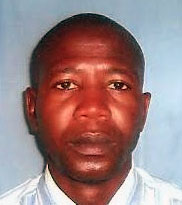Child malnutrition in northern Nigeria: Education, increased funding key solutions
BY Afolabi Gambari
Thirty-four-year Mallama Hajaratu Mohammed (pictured) had a big issue in her hands. The big issue? Her three-year-old son, Saidu, could neither walk nor eat alone and could do just nothing without being aided. Not that the mother could not have raised the alarm over this abnormality. But she had thought otherwise, believing it was a phase that would soon go away.
“I noticed that Saidu was underweight for his age, especially when compared with other children that were his mates,” she had told this writer in Hausa at the Yan’Awaki Health Centre in Kano in August 2016.
“I had thought that he was only troubled by a normal ailment that would be cured with time. So I tried to apply local herbs in bathing him several times because such herbs have been proved to help children grow well. But when his condition did not improve satisfactorily, I had to take him to the health centre for proper care.”
Illiteracy has robbed Hajaratu of the knowledge required in making her child get a proper diet that should save him from malnutrition. Unknown to her, she had thought that the child suffered from the children-related ailments. Yet, there are many mothers in her category as depicted by the many children that range from age 0 to 5 needing urgent nourishing care at several health centres across the north-east.
The first 1,000 days of any child have been discovered to be vital, according to UNICEF which counsels that a child must enjoy exclusive breast feeding for at least 180 days which totals six months. This, UNICEF says, would put the child on a sound footing in the journey of life in order to be free from life-threatening ailments as well as enable the brain to function optimally, in addition to making the child to ultimately contribute meaningfully to the society.
Hajaratu and fellow mothers, it was discovered, had either not been breast feeding their children adequately during the first six months or have been giving the babies water which could only disrupt their proper growth. The result was the stunted growth that led them to seeking rescue at the health centres.
Educating the mothers on breast feeding of babies could sometimes look easy. But that is only how it sounds. It can also be as hazardous, as health workers in various Nigerian communities, especially in the north-east and north-west, contend with several challenges that include religious and cultural. Insurgency in the north-east also poses huge threat to reaching mothers that need education on child nutrition, in addition to the accompanying high food insecurity and loss of livelihoods. Limited dieting diversity also poses a formidable threat.
Without a doubt, however, education is key to seeking sustainable solution to all forms of child malnutrition.
But education without adequate funding will still stall progress, if not altogether cause unmitigated setback for the intervention efforts that have been made by government and aid agencies.
Over the years, for instance, not all funds allocated to wage war on malnutrition have been released. In some cases, funds have been released at the end of every year while in other cases not released at all, despite the United Nations having declared 2016 to 2026 as ‘Decade of Nutrition’.
A Nigerian government that has several priorities, especially in the north-east, chief of which is the war against insurgency, still requires about $100 million to address child malnutrition that is ravaging the region while UNICEF itself requires over $1 billion to tackle the malaise that has left the region with 42.8 per cent affliction of the 2.5 million affected children in Nigeria, only trailing the north-west that has the highest rate in the country with 50.4 per cent.
Essentially, it has become imperative for the private sector of Nigeria to get involved in the effort to reduce child malnutrition to the barest minimum in the country. Over time, the private sector has been said to be well placed to complement the government, especially in funding. Perhaps, this should call for advocacy by the media and other relevant groups with a view to achieving the desired result.
At a two-day UNICEF and Federal Ministry of Information, Culture-organised Media Dialogue on Child Malnutrition held in Yola, Adamawa State on December 7 and 8, participating journalists were reminded of their vital role in achieving a nutrition-efficient population. Several key messages were developed and adopted by the journalists and dialogue organisers with which the former could drive into the right quarters the danger posed by malnourished children to the future wellbeing of Nigeria.
Among the key messages include ‘Investment in child nutrition saves children and reduces poverty in adulthood’, ‘Research has shown that in Africa for every dollar invested in child nutrition, there is a return of $16 dollars on investment’, ‘Women empowerment improves the nutritional status of children’, ‘With just N22,000, you will save a child on the brink of death. Support efforts to end malnutrition in the north-east’, ‘Save the lives of children in north-east, say no to violence, promote food and nutrition security’, ‘A malnourished child is everybody’s burden. Let’s all join hands to save Nigeria’s future. Think Nutrition, Save the future!’, ‘Insurgency fuels malnutrition, malnutrition destroys our future. End the insurgency’, and ‘Do you know that Nigeria’s GDP will worsen if malnutrition in the north-east is not stopped?’
A communication consultant, #Diego Odoh Okonyedo, however counselled the journalists on the need to deploy clarity, exact language and appeal as well as being sensitive to norms of the target audience while driving home the messages.
